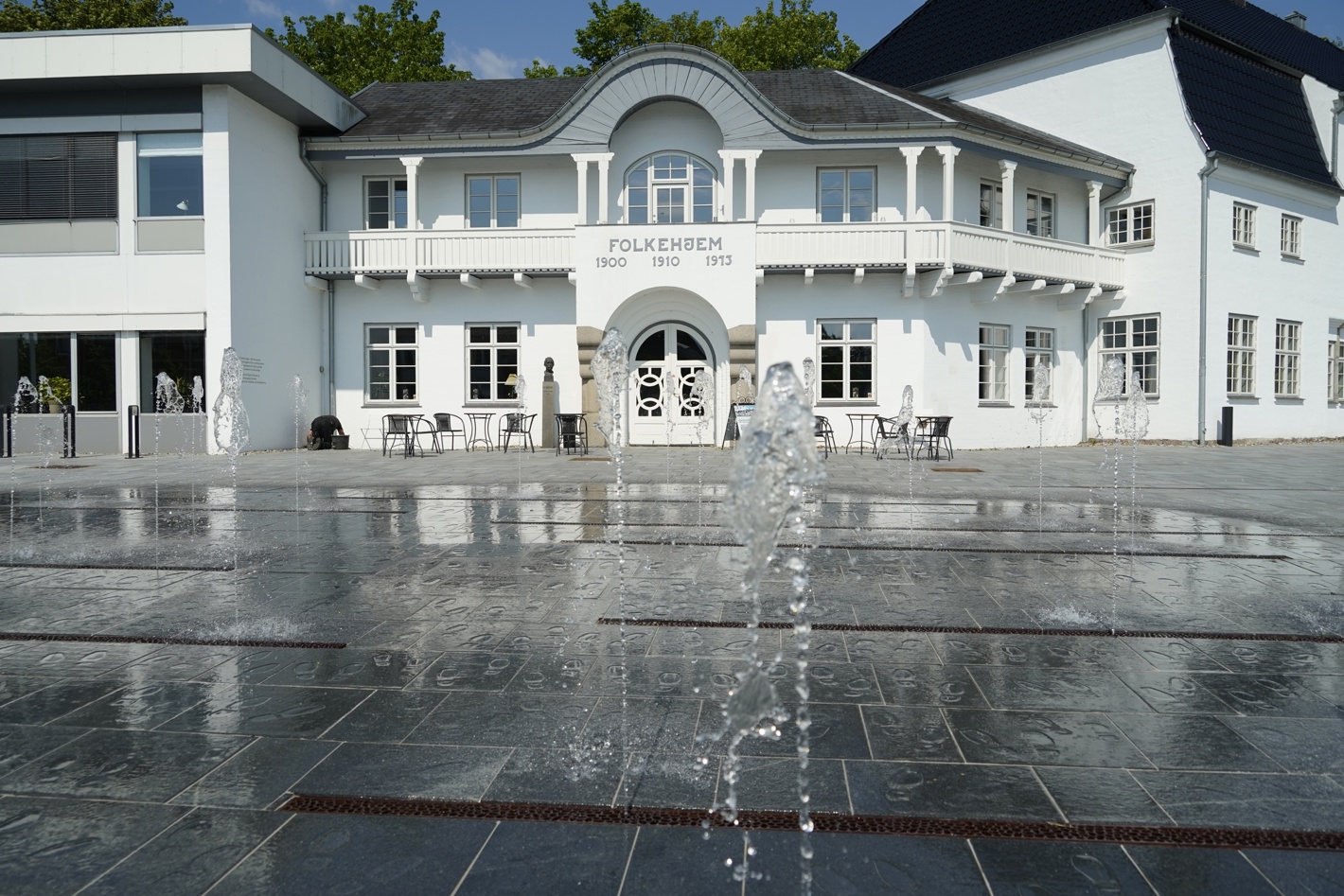Folkehjem
Read more about Folkehjem in Aabenraa Kommune here.

Folkehjem is a Danish village hall in Aabenraa purchased by the Language Association (Sprogforeningen) in 1900; before that it had been known as Schweizerhalle. Under the guidance of architects Johannes Magdahl Nielsen and Jep Fink the hall was expanded in 1910-11 and included i.a. meeting rooms, lending and reading rooms and a restaurant. In 1965, Folkehjem became a selfgoverning institution. It is home to the picture room with portraits of key actors in the Danish party of the Danish-German nationality conflict in Southern Jutland in the 1800s. Today, it is also home to the Aabenraa Libraries.
In fall 1918, it was obvious that the German Reich – of which Southern Jutland was a part – would lose the World War. In October, the German Government requested a ceasefire, and H.P. Hanssen, Southern Jutland’s own member of the German Parliament in Berlin, glimpsed the opportunity of raising the Northern Schleswig issue with reference to section 5 of the Peace of Prague and US President Wilson’s statement of principles for peace, the famous Fourteen Points. Adopting a clever multi-pronged strategy, H.P. Hanssen managed both to raise the issue in the German Parliament, to brief the Danish Government about internal German deliberations and to launch a regional petition which resulted in massive support from 287 Danish-oriented associations in Southern Jutland. In the Aabenraa Resolution of November 1918, the constituency association of the Danish-oriented citizens of Northern Schleswig (”Vælgerforeningen for Nordslesvig”) called for an en bloc referendum in the area north of the Tønder-Kruså line and in the individual municipalities in the area south of the line which also demanded a referendum. The resolution was adopted at Folkehjem in Aabenraa on 17 November 1918, and from the balcony, H.P. Hanssen read it out loud to a crowd of 3,000. The resolution would become vital to the further developments. The Danish Minister of Foreign Affairs, Scavenius, passed the resolution on to the allied negotiators and confirmed – after pressure from the allies – that the Danish Government supported the resolution. Both the referendum and subsequent demarcation in 1920 would follow this model.
H.P. Hanssen (1862-1936) was a Danish-oriented politician and editor of the newspaper Hejmdal from 1893. The Constituency Association for Northern Schleswig was established on his initiative in 1888 , which marked the beginning of his (Nationalist) political career. In 1886 -1908, he represented the Danish-oriented citizens of Schleswig in the Prussian Landtag and in 1906-1919 in the German Parliament. Following the German defeat in WW1, H.P. Hanssen demanded that the Danish-German border issue be solved by a referendum. Countering the Danish Nationalist demands for a border south of Flensburg, H.P. Hanssen supported a border resembling the one that resulted from the 1920 referendum. In 1919, he became a member of the Danish Government as Minister for Southern Jutland Affairs, and in 1924-26 he was a Member of Parliament for Venstre – The Liberal Party of Denmark.
Through the ages, Folkehjem has housed the Danish associations in Southern Jutland as well as key events in the history of the region. E.g., the association Landeværnet was established here on 24 January 1927, and this was where the English troops were greeted on 5 May 1945. In 2020, to celebrate the 100-year anniversary of the Reunification, the square in front of Folkehjem was restored. Countless footprints in the flags tell the story of H.P. Hanssen’s speech in November 1917, and benches on the square have been decorated with a series of important quotes from the dramatic history of the Danish-German border region.


